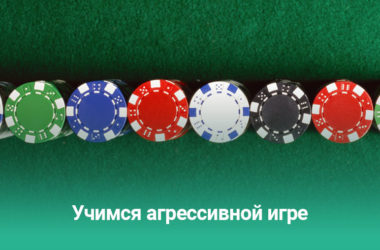With so many different poker formats out there, it can be difficult, especially for beginners, to choose the best game. One of the most popular formats for new players is Sit & Go tournaments.
Today we will look at the pros and cons of playing Sit & Go (SNG) tournaments and try to explain all the basic concepts you need to understand before playing these games.
Sit and Go tournaments (SNGs) are online poker tournaments that start when the registered number of players has gathered. SNGs can vary greatly in terms of the number of players, the number of blind levels passed, the distribution of prizes, the size of the purchase, and much more.
SNGs are sometimes held in live arenas, especially at the WSOP, but they really became an important part of the poker industry when online poker collapsed in the early 2000s. Since waiting for the scheduled tournaments to start can be a real challenge, online sites presented SNGs as the ideal alternative and SNG crushers were born.
When they were first introduced, SNGs were usually 9 or 10 player tournaments with 10 minute blind levels. Over time, new, different and more exciting formats were introduced, while very few continued to play at "normal" speed or 9-person SNGs.
Instead, most serious players currently choose to play 6 SNG Max Turbo or Hyper Turbo. While the faster structure of such tournaments does indeed limit the qualification factor in these games, players prefer shorter overall playing times, which often translate into higher hourly winnings for qualified players.
SNG Heads Up, especially Hyper Turbo with extremely fast blind levels, have become popular among multi-table mills. These players are simply trying to get as much volume as possible and profit from poker room revenues such as rakeback and loyalty programs. With recent changes in the VIP system Pokerstars this grinding method is disappearing for many HUSNG crushers with medium rates.
Many players still compete in Turbo Multi Table SNGs where 18 to 180 players compete for a share of the prize pool. These tournaments are often played more like regular MTTs with more players than regular SNGs, but they still start as soon as enough players have registered.

How to Play Sit-n-Go to Win
If you are serious about poker and want to win real money. The way to measure your winnings in SNGs is your return on investment (ROI) and hourly win rate. Players often have different opinions about which one is more important, but in general, the higher your hourly winnings, the more money you will make.
Your ROI is the percentage of the average purchase you make in a tournament. For example, if you are playing $ 5 SNGs and your ROI is 10%, that means you are winning $ 0.50 per tournament played. This may sound low, but in reality the numbers in today's game tend to be even lower for winning players, and volume is extremely important.
This is where the hourly win rate begins. No matter what ROI you have, the more tables you can play at the same time, the more money you can make per hour. For example, if you can comfortably play 10 tables at the same time without compromising your ROI, you will get higher hourly winnings than playing one or five tables at once. The best players in the game play more than 10 tables at the same time, as most of their decisions in SNG tournaments are fairly common and easily made by experienced players.
The early phase is the first few levels of the tournament. The stack-to-blind ratio is great as you often start with 100 big blinds and you won't have much of a reason to play anything other than strong holdings as there is very little stealing in terms of blinds. If you don't have big hands, save your chips, play well, and wait for the blinds to start playing.
The middle phase of SNG tournaments begins with the introduction of the ante. At this point, the average stack will drop to about 20 big blinds, and it is time to start using your stack to steal chips mercilessly. In this phase, pushing again becomes extremely powerful, as players will open hands they don't want to stack with in the hope of stealing the blinds. You will have many opportunities to steal chips and increase your stack without showing up.
The late phase is usually in the bladder and in the money. From a monetary point of view, this is the most important step, as your mistakes here will cost you the most, and good games will make you more money. Learning a solid jogging game will be extremely important in the late game, and a solid understanding of ICM will be just as important. If you have one thing to remember at the moment, you can hardly ever open / fold. If you go to a hand, you usually go all-in.
In general, there is nothing wrong with playing cash games if you can beat them. However, in my personal experience, SNGs are easier to learn and easier to use. Cash games are often very difficult on many levels, mostly psychological, and the fact that you will be spending so much time on very deep stacks means more opportunities for making huge mistakes and deviating your bankroll in one bad session.
SNGs are less prone to making these big mistakes, and while you may not be able to win that much right away, you will also limit your losses and learn discipline by playing these games. Personally, I think cash games are where you need to win the most money, but SNGs are the perfect stepping stone to being a successful cash game player.
I often hear people ask if there is still money to be won playing SNGs, and the answer is definitely yes. The game requires deep knowledge of mathematical concepts such as ICM and general pushing ranges, but once you find out that this can be a fairly consistent and good source of poker income and can even help improve your MTT game.
The increase in average skill level we've seen in recent years has made variance more of a problem than ever, so be prepared for some major ups and downs. That said, if you use the right bankroll management and play games that you can actually win, there is absolutely no reason why SNG tournaments should not be profitable for you.




